Here we feature items from our archive.
July 2023
George and Rena popped into the Burgh Collection to have a chat and share their memories of the Regal Cinema, Crichton St Anstruther. Rena’s father Lindsay Berwick ran the cinema along with other family and friends from the 1950s. However the cinema itself dates back further being built in 1934. The first film shown on the opening night of 19th July 1934 was Footlight Parade starring James Cagney.
In its heyday The Regal showed films every night with extra children’s shows on Saturday morning. Tickets were issued at the kiosk, which also sold ice creams and orange juice. The ushers would tear the tickets in half – returning a portion attendee. Local children got around paying and sneaking in by having friends open the emergency door once the lights had gone down. If spotted by the ushers on their way up and down the stalls they would demand to see their tickets and thrown out of the cinema.
The films were very well attended by holidaymakers as well as by locals. George recalled that often, if the weather was poor, Lindsay would send a van around the Holiday Camp with loudspeakers telling people they would be showing a film that afternoon. The holidaymakers then flocked to the cinema for some indoor entertainment out of the rain. Another attraction of going to the cinema for some was the double seating, without armrests, in the last two rows of the balcony. Rena and George remember they were very popular with teenagers.
They recalled stories of Ossie, the projectionist who had to change reels part way through a film. This was often needed three or four times during the film and if he didn’t notice a reel had finished the audience would stamp their feet waiting on the picture coming back on. The projector was a complicated piece of machinery with skill and care needed to thread the film then line up carbon rods which provided the light to project the film.
Once a reel was finished it had to be rewound back onto another reel to be handed back to the film distributers. George remembers a van coming every week to collect and drop off the films.
By the 1960s people had their own televisions in the home and cinema going began to decline. Rena said that one way to encourage audiences into to the Regal was the introduction of Bingo. Every Friday night a mini- bingo was run in the front seats with the caller on the stage starting at 7.15pm. It offered small prizes such as would be found at a fairground bingo. Then the main bingo event started at 8pm offering what for the time would have been large prize money, £100 on a snowball on getting full house by 50 numbers being called and various other ‘in the game’ prizes. This was a very popular event and very well attended. Oddly many patrons preferred to sit up in the balcony when playing rather than closer to the stage. George invented a very ingenious device to save him running up and down stairs – a tin can on a pulley string. When someone called house, he could pop the card into the can and send it downstairs to be checked and the cash prize would be sent back up so the game wasn’t interrupted for long, which would not have gone down well with the bingo players!
Eventually the cinema audiences declined further. George and Rena recalled that people’s ideas of a night out altered. It had been common for as well as a cinema visit for people to have gone to see a live band performing in a local hall. People often started the evening in the cinema, went on to a dance and finished the evening off in one of the local pubs.
However with discos and dancing to recorded music become more popular and the attractions of nightclubs opening in Leven and Kirkcaldy the local live entertainment was not so well attended. Along with that, there was a decline in going regularly to the cinema.
The Regal Cinema closed in 1972, the last film shown being Lawrence of Arabia. The building was eventually knocked down to make way for housing.
George and Rena remembered the enjoyment of working in the cinema with all their friends and relatives and spoke fondly of that time. We are very grateful to them for sharing their memories with us.
We were unable to check the spelling of Ozzie, the projectionists’ name, apologies if it is not correct, we will be happy to change this if anyone knows what spelling he preferred.
https://cinematreasures.org/theaters/69057
Also see Happy Days, one of the Burgh Collection books which tells the story of holidaymakers visiting Anstruther from the 1950s.
January 2023
Happy New Year to all our readers. Here we are featuring an example of one of our current projects, to digitise photographs from our collection. We are very grateful for the help we have received from pupils at Waid Academy with this work.
Waid Academy Rugby Team 1889-90
Jamie Anderson and Jack McLaren, senior students at Waid Academy, are volunteering after school each week to help us digitise our photo collection.
As part of our project, working with the Burgh Collection, we have been archiving old Waid sports photographs, and while doing so, this picture caught our eye. This was because it not only pictured a rugby team, which is a sport we both enjoy playing and spectating, but it was also the oldest sports photograph in our very packed Waid Academy sport archive. This picture was taken in 1889, which was 3 years on from the opening of the very historic school, which has long been regarded as a top rugby school. This photograph further shows how Waid Academy has had sports teams from the very beginning, and paved the way for other schools to follow in their footsteps regarding school sport. What is also fascinating about this picture is that The Burgh Collection has been able to gather the names of all participating in this team photograph. Although we don’t know the match scores of this team, we know the importance this team has had on Waid sport and its long-standing reputation.
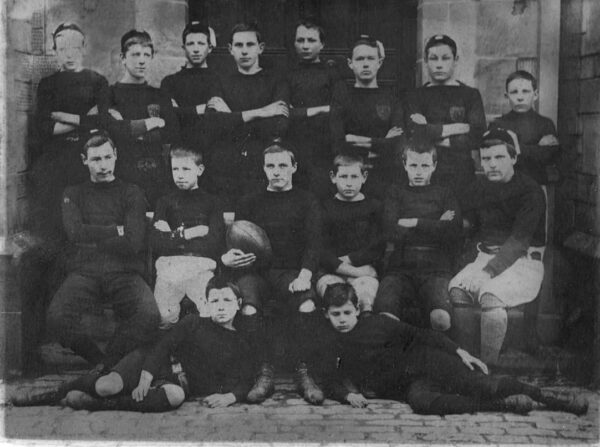
Waid 1st XV 1889-1890
T D Murray D Cook W Carnegie D Ireland W Sime H Cargill C P Edie G Lumsden
J Bell A Cook R Reid H Edie W Band A C Robertson
C Stockwell F Bruce
September 2022
Here we have an one of our items from the Collection. Its is a newsletter from 2008. Sadly the main story features the work of Bill Flett who had recently died.
August 2022
With the school exam results now published and the 2022-23 session beginning at our own secondary, we thought we would feature an item from Anstruther Free Church School in 1847 presented to Alexander a pupil at the school.

“Well Begun is Half Done,” reads the legend at the top of this school leaving certificate. Long before the Scottish Qualifications Authority and its national exams were conceived, Scottish Schools issued their own leaving certificates, signed by the school governors and an inspector of schools.
Post-Covid, one option being suggested to replace national exams is a school-based leaving certificate…
Alexander (S Tod?) was good at Geography and Grammar, and very good at English History. Possibly Scottish History was not on the curriculum.
This certificate dates from 1847 before Waid Academy was established in 1886 from the legacy given by Lt Andrew Waid, RN.
August 2022
We were recently visited by Ruth Ferguson , great -granddaughter of Robert Brodie former Provost of Anstruther Wester . Brodie’s cleek – making factory was a significant employer in its day, and we have some of his clubs in our collection. In 1916 Baillie Brodie argued at a military tribunal that his son Andrew should be exempt from conscription as many employees had been taken into the ranks. But this was refused. Subsequently Lance Corporal Brodie (29) was killed in action on 31 July 1917 at the 3rd Battle of Ypres- Passchendaele. The 9th Battalion of Black Watch in which he fought lost 225 men that day. Andrew is commemorated on various memorials in Anstruther – at Billowness, Waid memorial and Anstruther Golf Club. We are grateful to Ruth for this photo of her relative.

July 2022
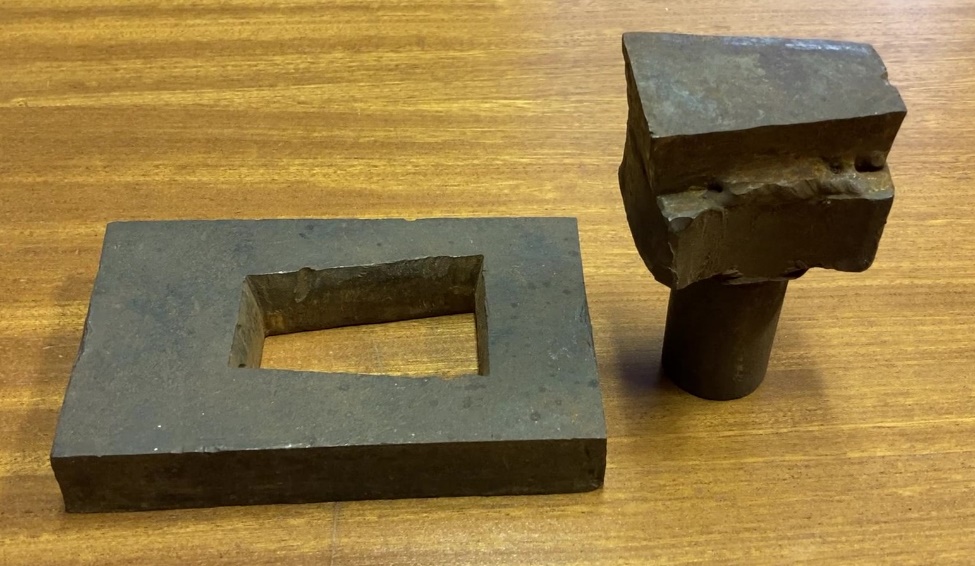

Hand forged iron cleek (golf club) maker
This hand forged iron cleek (golf club) maker is probably from the workshop of James Anderson, who also traded as a blacksmith, and was likely made before 1900.
If anyone can give us any further information, or knows anything about the process of creating a cleek head from this stamp, we’d love to hear from you.
———————————————————————————————————————————-
The home of golf will host The 150th Open at the Old Course, St Andrews 14th – 17th July.
But did you know of the golf club makers of Anstruther? To celebrate the open, we are going to feature some of their work we have in the Kilrenny and Anstruther Burgh Collection.
Cleek (golf club) made in Anstruther
One of several golf clubs, or cleeks, in our collection, this was hand forged in Anstruther by R Brodie and Sons. They also made clubs for Old Tom Morris’ shop, with Old Tom’s head as a cleekmark, around 1910.
Cleeks were made and sold under different brands. In the 15th Century, a cleek, or cleque, was a hook for catching hold of something; the first recorded use of golfers’ “drivers and cleeks” dates from 1829, in St Andrews.
Alex Anderson of Anstruther was one of the largest manufacturers, working well into the 1930’s. He inherited the business Anderson & Son from his father, James Anderson in the late 1800’s

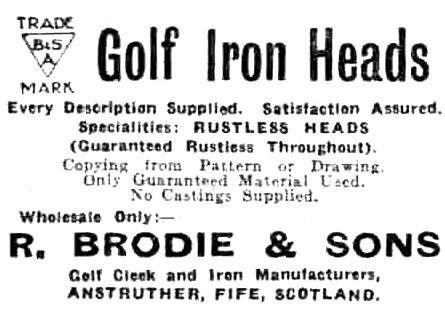
July 2022
With schools having finished for the summer holidays , we thought we would look back at some of the Cellardyke Primary objects in our collection.
For any years, School Dux (Leading Pupils) names were proudly displayed in their halls or entrances, and the awards of medals celebrated by families. We are pleased to display several Dux Boards from Cellardyke School in our Collection.
The prize winners’ names were published each year in the newspapers. Here is a transcript of the article in the Dundee Courier Saturday 06 July 1935. There are familiar names here –
PRIZE-WINNING PUPILS AT CELLARDYKE. Prizes Cellardyke School children were presented at-the closing ceremony yesterday forenoon. Provost Carstairs addressed the scholars. . Principal prize-winners were:— senior 1. (girls) Elma Thomson, 2 Margaret Donaldson, 3 Margaret Stevenson.
Sewing —Joan Hiscock.
Senior I. (boys)—l Kenneth Keay, Wm. Dunsire, 3 George McKenzie
Handwork —Archie Mitchell.
Good fellowship—James McLeod and Kathleen Smith.
Essay prize (R.N.L.I.) Jean Harris;
S.S.P.C.A. —Alick Watson.
Senior II. —1 Hannah Parker. 2 Margaret Watson, 3 James Smith. Knitting— Margaret Williamson.
Handwork —Alex. Lothian.
Senior 111. —1 Barbara Bowman, 2 Betty Watson. 3 Robert Deas. Junior I. (girls)—l Betty Bisset and Thomasina Stevenson, Betty Donaldson, Thomasina Bett.
Boys—l John Wilson, 2 William Gardner, 3 Robert Stevenson. Sewing—Ella Doig.
Junior 11. (girls)—l Marjorie Morrison and Elsie Wallace,2. Ena Gow. Boys—l Henry Gardner, 2 Charlie Anderson, 3 John Parker.
Junior 11. (West School) —1 William Ireland, 2 Jessie Thomson.


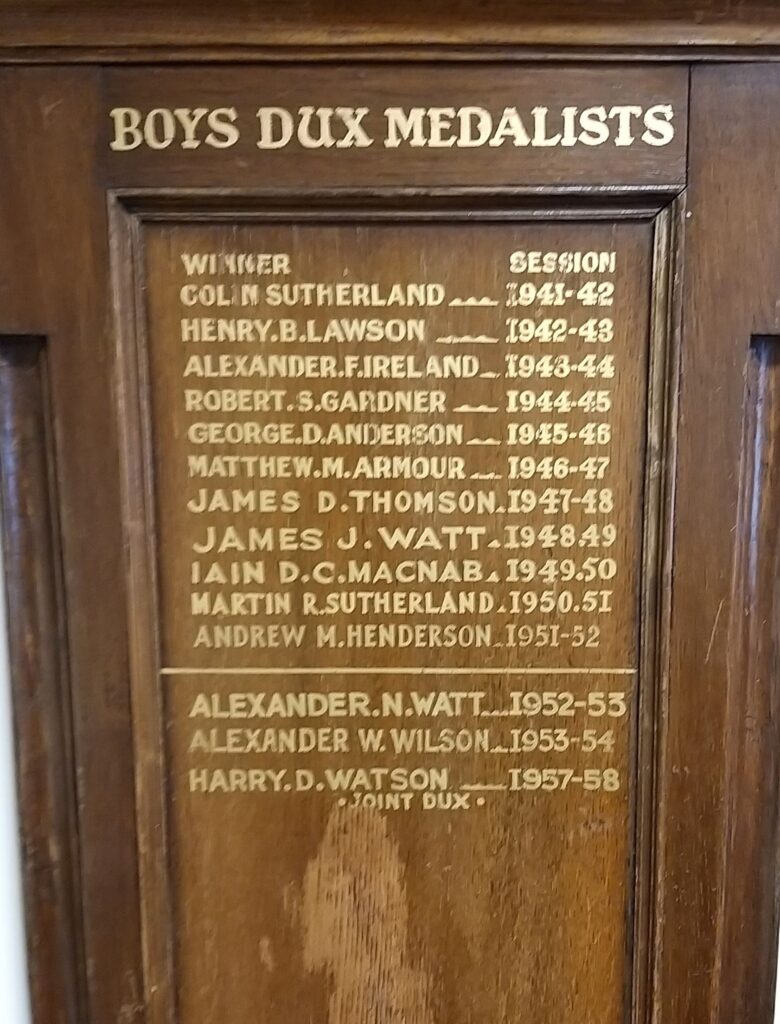
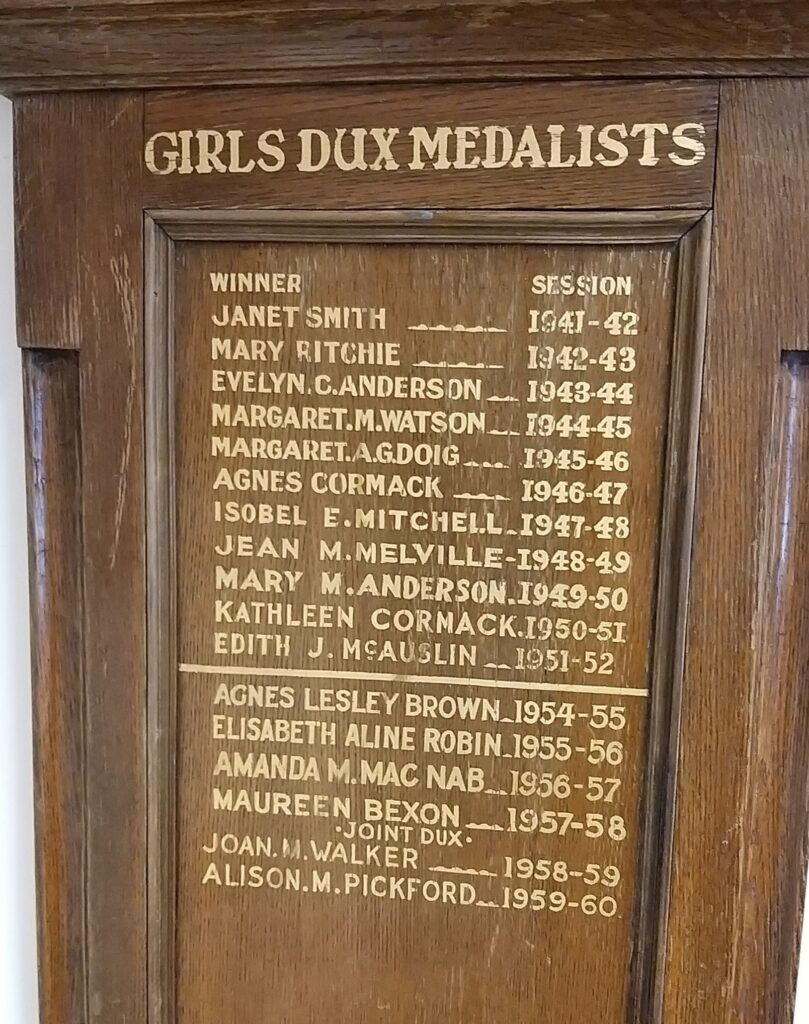
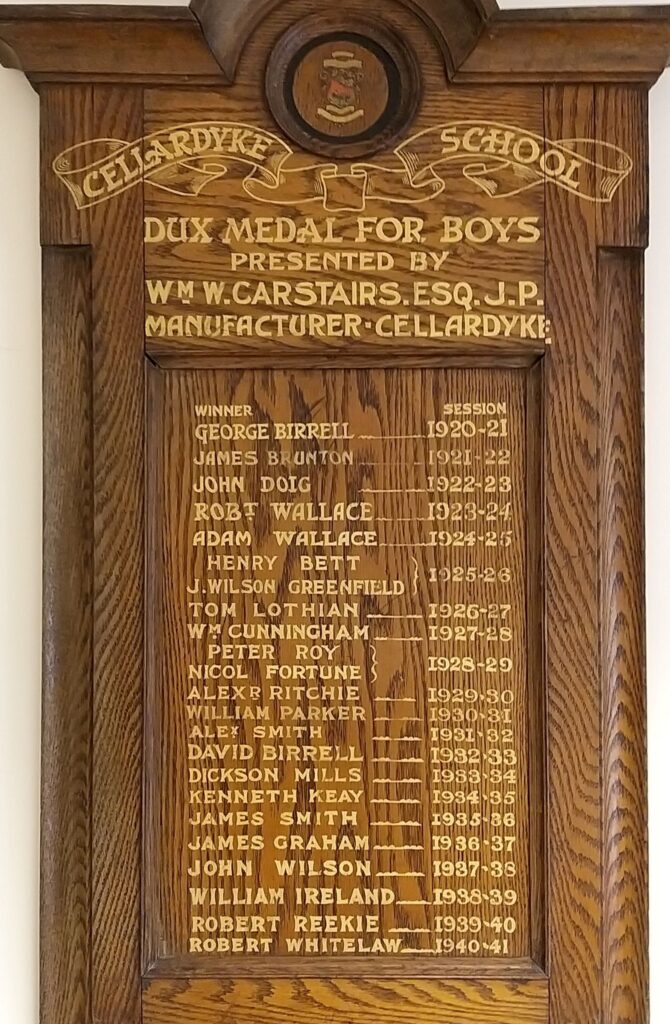
July 2022
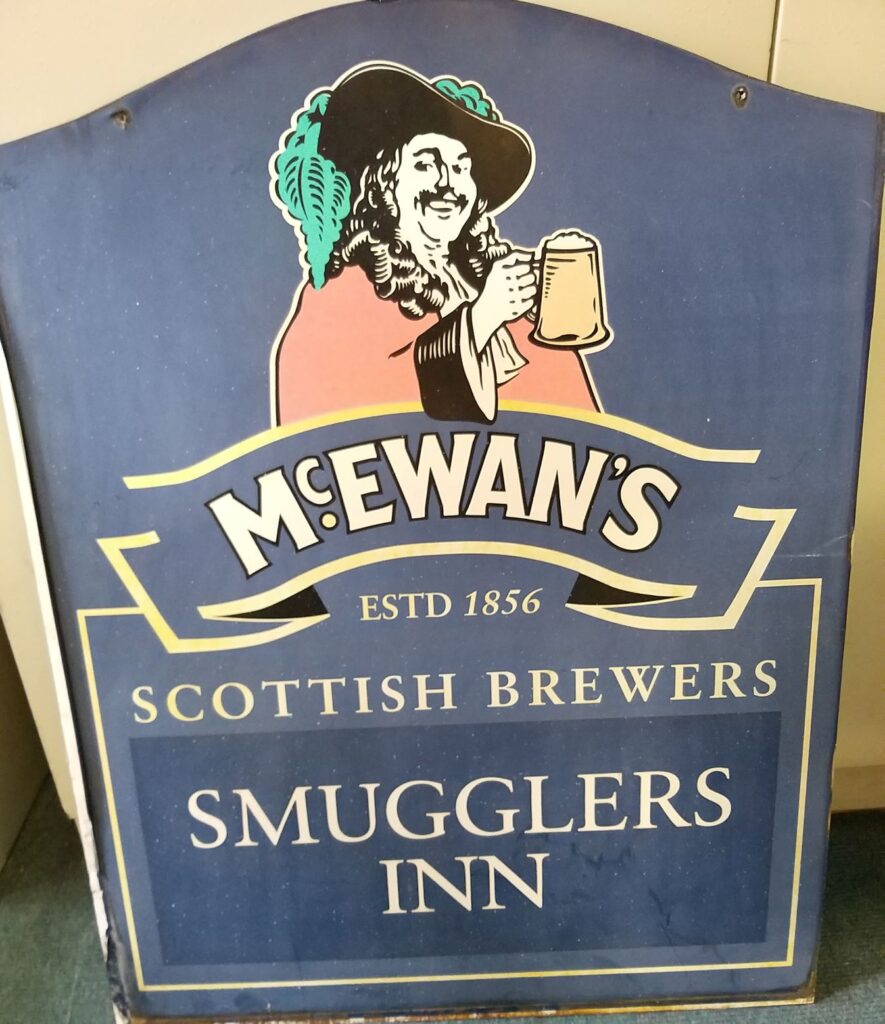
Standing about four feet tall, this is the sign that hung outside the Smugglers Inn, Anstruther, before it was gutted, renovated and turned into private accommodation. Older residents may remember the parrot which sat in reception, and the excellent pizzas turned out from the Smugglers oven back in the 1980s. Sadly the parrot was stolen, and the pizza oven long-ago scrapped. The sign was literally plucked from a skip by the late Alan Gordon, a stalwart of the Burgh Collection for many years.
Glenn Jones
June 2022
Bill Flett, photographer of Anstruther, covered almost every important event in the East Neuk for decades. Bill was made our first honorary member of the Kilrenny and Anstruther Burgh Collection.
His battered camera case accompanied him everywhere he went, and is now in the archives of Kilrenny and Burgh Collection. The accompanying photograph by Bill brilliantly captures the melancholy aftermath of the dreadful fire which destroyed the historic Chalmer’s Church in the early 1990’s, as the firefighters dampen down the flames on the morning after. The photo was donated to the Burgh Collection by Bill, and is also in our archive.
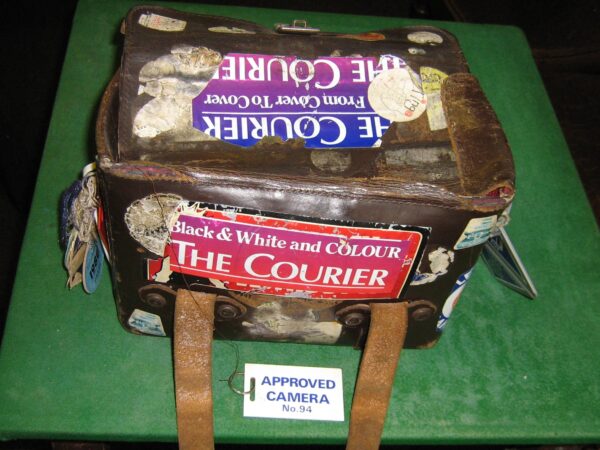
Glenn Jones

